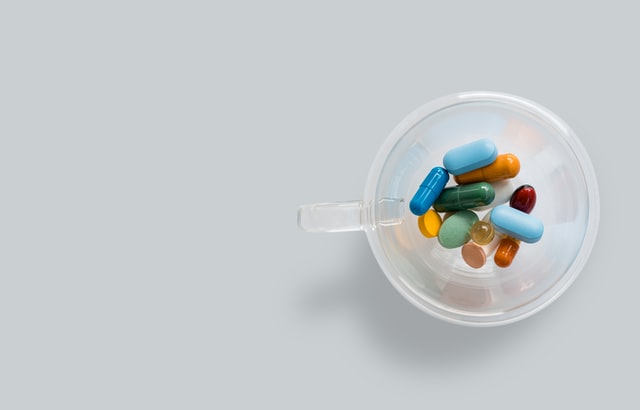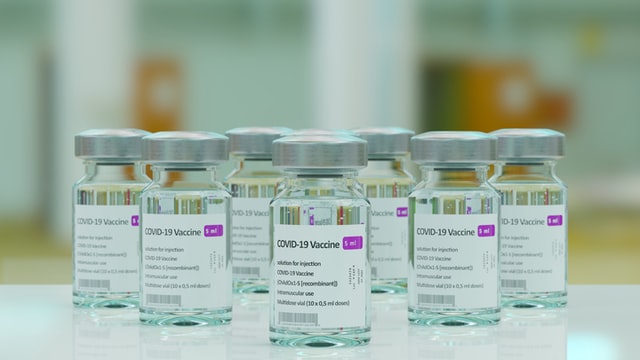The future of AMR diagnostics
17 Jun 2021
AMR diagnostics in light of evolving technologies and access in low- and middle-income countries.
To celebrate the British Society for Antimicrobial Chemotherapy’s (BSAC) 50th anniversary, throughout 2021 it is inviting select experts to share what they envision will be the solutions to one of the biggest and most complex challenges of our generation: antimicrobial resistance (AMR). Daniel Berman, Global Health Director and Ruth Neale, Longitude Prize Programme Manager at Nesta Challenges were invited to explore the future of AMR diagnostics.
This blog was originally posted by BSAC for its Vanguard Report on 27 May 2021 and is reproduced with its permission.
Where are we now?
In 2014, The Longitude Prize set out to drive innovation to tackle global antimicrobial resistance (AMR). At the time, the dream was to incentivise rapid point-of-care diagnostic tests that would dramatically reduce the unnecessary use of antibiotics by differentiating between viral and bacterial infections.
But today many clinicians are asking for more information to understand what they are dealing with and ensure they provide the best treatment plan for their patient. They want bacteria pathogen identification (ID), which antibiotic will be effective, and if possible, determine the severity of an infection. In simple terms, they not only want to know whether a prescription is necessary, but what to prescribe and whether the patient could resolve the infection without antibiotics (ideally!).
The bar has risen significantly since 2014 and the technology is catching up to clinical need. For example, today there are urinary tract infection (UTI) tests with pathogen ID and antibiotic susceptibility test (AST) results being delivered close to 30 minutes. Implementation of these innovative tests happily threaten the current dipsticks with retirement.
The technology is emerging, but will the products reach the market and be used in clinics and hospitals? We still see an urgent need to catalyse innovation and market entry. With resistance levels rising, there is a need to get new tests in the hands of healthcare professionals on the frontline of patient care as soon as is humanly possible.
The AMR public health crisis necessitates that we challenge our limited idea of “value”. We are probably not the only ones that are tired of hearing that “to be feasible, innovative tests must cost less than a course of antibiotics”. There are also distortions to reckon with. Investors and test developers continue to focus on the holy grail of developing diagnostics for the US and other high-paying OECD countries. Granted, return on investment is leagues above many lower- and middle-income countries (LMICs) but, with 80% of the world population living in LMICs, developing tests primarily for wealthy countries is not an option. AMR impacts communities without any respect for or interest in national borders.
Today, there are urinary tract infection (UTI) tests which deliver results in close to 30 minutes.

Where do we need to be within a generation?
Imagine diagnostic tests for bacterial infections that are as accurate, robust and easy-to-use as what we have today for pregnancy or to diagnose HIV? That’s where we need to get to within a generation. We went from desktop to smartphone (with more computing power per device than what put a man on the moon in the 1960s) in just a matter of years so why would this not be possible?
Development of affordable, easy-to-use, and rapid point-of-care tests for common life-threatening bacterial infections would have a powerful multiplier effect. With these tools GPs and other practitioners would be empowered to prescribe antibiotics only when they have a biological confirmation including AST. Equally, emergency, and intensive care units would have practically failsafe diagnosis of pathogens and AST for specific infections to increase cure rates and avoid life-threatening disease progression.
What we need is the political will we are seeing with Covid-19 and a radically different approach to assessing diagnostic value. Health technology assessment (HTA) must be radically reformulated to give a more holistic assessment of benefits not just to patients but to health care systems and society. The consequences of individuals taking unnecessary antibiotics needs to be captured for better evidence. What is the cost to the health care system of repeat visits and unnecessary hospitalisations? There is also the cost of not getting prescriptions right the first time – ineffective antibiotic prescribing increases resistance rates – and if healthcare professionals are unable to work at the speed they need to.
We also need investment vehicles to thrive with returns that could be delivered with high volume, affordable price points and designed to meet needs of LMIC contexts. For example, some institutional investors will be willing to include social impact in their calculations. All too often products that are designed for sale in the most lucrative markets are not practical to use in most LMIC contexts. Incentives have to be created for investors to allocate funds to products that are needed and will have optimal impact.
The consequences of individuals taking unnecessary antibiotics needs to be captured for better evidence.

How do we go from here to there?
Because of the knock-on effect of increasing drug-resistance, the response needs to be commensurate with the need. As more and more opportunities open to shift the ways in which we tackle AMR, willingness to finance development and purchase innovative products will be key.
The political will has been there to rapidly develop tools to address the Covid-19 pandemic so it can be harnessed for AMR too. In addition to this, plus increased investment, and willingness to pay, we urgently need closer collaboration between diagnostic developers and clinicians. It is clinicians who best understand what they need and can successfully champion the support for this need.
Ultimately, the Covid-19 experience has demonstrated that centralised approaches to public health have their limits. We need to foster diverse approaches by multiple teams of developers and clinicians. We have also seen the need to push diagnosis and treatment into the community and ultimately into people’s homes. As members of the AMR community, we are committed to helping convince policymakers and budget holders that innovative diagnostics have real value to patients and health providers. This change in thinking will require a concerted coordinated effort but it is possible.
The political will has been there to rapidly develop tools to address the Covid-19 pandemic so it can be harnessed for AMR too.

Initial response from BSAC
Many people do not appreciate that the majority of antibiotic prescriptions are written before a doctor knows what is causing a patient’s infection. That is, the prescription is done on a best guess basis.
Results of any samples sent to the laboratory for testing often come back too slowly to inform the initial antibiotic treatment.
The aspiration in the UK AMR action plan is to make every antibiotic prescription an informed prescription. To achieve this, new diagnostic testing pathways are needed and, in some cases, new diagnostic assays. The article outlines some of the progress being made towards this.
Some might consider that the bar is being set too high and that significant progress is unachievable. Nevertheless, the COVID pandemic has shown how quickly new diagnostic tests can be developed and implemented at large scale. Perhaps this is an opportunity we can grasp.
A potential note of caution though is that the new testing pathways will need to be evaluated properly. Evidence of the patient benefit will need to be gathered from adequately resourced and conducted trials and these should inform future practice. Patient outcomes are key. A new diagnostic test might not make any difference to prescribing behaviour. Indeed, it is possible that it could make things worse.
The article considers that the wider value to society must be taken into account when assessing the cost of new diagnostics. This should include the impact on the development of antimicrobial resistance.
